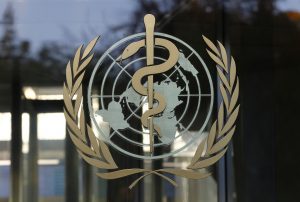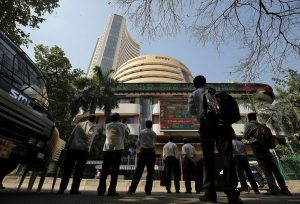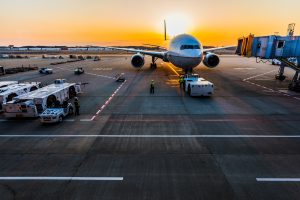The growing attack on the WHO’s coronavirus leadership is driven by politics, not principles

KV Prasad Jun 13, 2022, 06:35 AM IST (Published)
 Listen to the Article (6 Minutes)
Listen to the Article (6 Minutes)
Summary
For besieged leaders in Beijing and Washington, there’s good reason to turn attention from their failures in battling the pandemic on to nationalism.
“Eradicate malaria”, read the posters that sprang up across rural India in the late 1950s, showing a monster-sized mosquito being fought by peasants armed with pesticide. In an act of subversiveness, or perhaps resignation, the unknown artist who designed the poster for the Ministry of Health clad his distinctly under-muscled malaria heroes only in kacchas: there was no point pretending the warrior for Indian socialist progress was the bicep-bound superman of Soviet propaganda.
The author RK Narayanan recorded the malaria campaign didn’t exactly fire the minds of the millions. “No wonder the people get malaria in those countries”, he has one peasant say in Malgudi Days of the gargantuan propaganda mosquitos. “ ‘Our own mosquitoes are so tiny that they are harmless’, which depressed the lecturer on malaria so much that he remained silent for ten minutes”.
Now, as the Wuhan virus rages across the world, the World Health Organization (WHO) has come under the most sustained assault it has faced since the collapse of its founding project, that great war against the mosquito. Tedros Adhanom Ghebreyesus, the WHO’s director-general, is accused of having covered up the seriousness of the epidemic at China’s urging—in essence, placing the superpower’s concerns over those of the world.
There’s no doubt some in the WHO have demonstrated an almost bizarre Beijing-philia: Ghebreyesus’ advisor, Bruce Aylward, evidently panicked and hung up on an interviewer who asked about Taiwan, a country China has successfully excluded from the global health body.
An easy target
Like with most things to do with nation-states, though, the real battle is about geopolitical influence and power—not the ethics of the WHO’s conduct. Faced with criticism of their governance skills from their publics, leaders in Beijing and Washington are scrambling to find scapegoats. The WHO’s leadership is an easy target.
In spite of its profile, the WHO is something of a bit-part in global health. The reason why isn’t a mystery. “The WHO’s budget for the biennium 2018–2019”, scholars Srikanth Reddy, Sumaira Mazhar and Raphael Lencucha have noted, “hovered around $4.421 billion, while the annual healthcare and social services budget of Quebec, a Canadian province in which we live is approximately $33 billion”. Indeed, the WHO had less funding “than the budget of many major hospitals in the United States”.
This year, the WHO’s budget is about $4.5 billion; the United Kingdom’s National Health Service alone has budgeted to spend some $133 billion. For the developing world, most dependent on the WHO, this has significant consequences.
Faced with the Ebola epidemic in 2014, the WHO was criticised for a slow, inept response. That was true—but the fact was the organisation’s outbreak and response budget, the allocations needed in the crisis, had dropped from $469 million in 2012-2013, to $228 million in 2014-2015.
Each of the WHO’s 194 members are meant to pay an assessed contribution, based on their income. In addition, both member-states and private-sector trusts pay voluntary donations, either for specific projects or emergencies. But as major governments began slashing funding after the Cold War, the WHO survival became increasingly tenuous.
Led by the United States, international institutions were seen, after World War II, as a means to consolidate liberal capitalism across the world—using progress as a tool. In 1948, the WHO came into existence, and soon found itself at the frontlines of a gargantuan global effort to eradicate malaria across the world. Based on the United States armed forces’ experiences in east Asia with the new pesticide, DDT.
From the outset, in 1955, some were sceptical about the campaign. No-one, they argued, knew how to effectively administer such a programme in the more under-administered regions of the world. The sceptics were proved right: As malaria resurged, in the 1960s, in areas it was claimed to have been eradicated, the campaign was terminated.
The Soviet Union, supported by many developing countries, now campaigned for universal primary healthcare, scholar Indira Chakravarthi has recorded. Halfdan Mahler, the WHO’s then-Director, saw the Soviet medical-driven system as useless for the developing world, and instead pushed for an alternate primary health system centred around the provision of food, drinking water and immunisation.
Donor pressure
From the 1990s, the WHO became increasingly dependent on voluntary contributions—often from private donors with their own agenda. In developing countries, criticism soon began to mount against what were seen as West-driven policies, which critics argued were inappropriate to regional and local needs. In India, for example, the WHO was charged with promoting excessive focus on polio immunisation, over the demands of other epidemic diseases. Elsewhere, there was concern over the WHO’s retreat from non-communicable diseases, and global rules to curb harmful foods.
Tedros’ unprecedented 133-50 triumph in the first WHO election where all members had an equal vote was, in key senses, a rebellion against this order of things. The developing world wanted a say in how the WHO was run, and what it ought do.
Last year, Tedros placed universal healthcare back at the centre of the WHO’s agenda, and outlined plans to have voluntary funds placed in a central pool, not donor-driven programmes. “I do not believe in perpetual reform”, the WHO director-general said, pushing back against further funding cuts. “I think WHO staff are reformed out.”
Looking out at the more bizarre assertions of his critics, it’s hard to miss the sense that at least some in the West are looking to settle the score: Tedros, some tellings of the story have it, is tainted by a Marxist past, ideologically beholden to Beijing. Foreign minister of Ethiopia from 2012-16, and Health Minister from 2012, Tedros’ was part of the Ethiopian People’s Revolutionary Democratic Front, and at one point, a Marxist group with close links to the Soviet Union. The story’s thrilling—but also pure fiction.
Following the collapse of the Soviet Union, the EPRDF reinvented itself. In the wake of 9/11, it led Ethiopia into a strategic partner of the United States’ Global War on Terrorism. As a member of prime minister Meles Zenawi and Hailemariam Desalegn’s cabinets, there’s little doubt Tedros would have known of Ethiopia’s provision of military bases to the USA, and even Central Intelligence Agency-run secret prisons, to combat jihadists in the Horn of Africa.
China’s investments in Ethiopia have indeed boomed, with the country building highways, ports, telecommunications infrastructure, railways and dams. But since 9/11, those investments have been dwarfed by assistance from the United States, which has consistently been the largest donor to the country. Ethiopia under Tedros’ foreign policy stewardship played all sides—just like all developing countries must.
Downplaying Wuhan virus
Beijing and Tedros weren’t, moreover, the only one downplaying the Wuhan virus threat. President Donald Trump ignored specific warnings from his own intelligence community in January and February—warnings that came in on the back of epidemic threat assessments delivered to him in 2017, 2018 and 2019, calling for more infrastructure to be built. There’s a long list of European countries, from the United Kingdom to Italy, which behaved in much the same manner.
Lawrence Gostin, among the experts who wanted a public health emergency declared earlier, told the BBC that “it was only a short delay and I don’t think the timing had any impact on the trajectory of Covid-19”.
There’s no great mystery to why bureaucrats stalled: the economic consequences of the drastic action a pandemic would have required were gigantic, and few wanted to be responsible for the fallout. Notably, Tedros’ predecessor, Margret Chan, was slammed for declaring an emergency when confronted with Swine Flu in 2010—leading countries to stock up on supplies and medication they did not eventually need.
Tedros’ experience in Ethiopia likely serves as a model for his conduct. The United States, not Beijing, is the WHO’s largest single national financier—but its support is, at best, uncertain. Even as the pandemic raged across the world, President Trump proposed slashing $3 billion from the United States’ international health aid, and having its $50 million contribution to the WHO. Beijing is the next largest donor, paying $25 million—and the WHO director-general knows his words of support are likely to be repaid with interest, in cash.
For besieged leaders in Beijing and Washington, there’s good reason to turn attention from their failures in battling the pandemic on to nationalism. Tedros and the WHO are scapegoats for far larger failings in global health infrastructure and preparedness.
For India, it is critical to avoid getting trapped in a New Cold War, and instead focus on building a blueprint for the credible global health system the developing world desperately needs.

Elon Musk forms several ‘X Holdings’ companies to fund potential Twitter buyout
3 Mins Read
Thursday’s filing dispelled some doubts, though Musk still has work to do. He and his advisers will spend the coming days vetting potential investors for the equity portion of his offer, according to people familiar with the matter

KV Prasad Journo follow politics, process in Parliament and US Congress. Former Congressional APSA-Fulbright Fellow










 Listen to the Article
Listen to the Article  Daily Newsletter
Daily Newsletter














